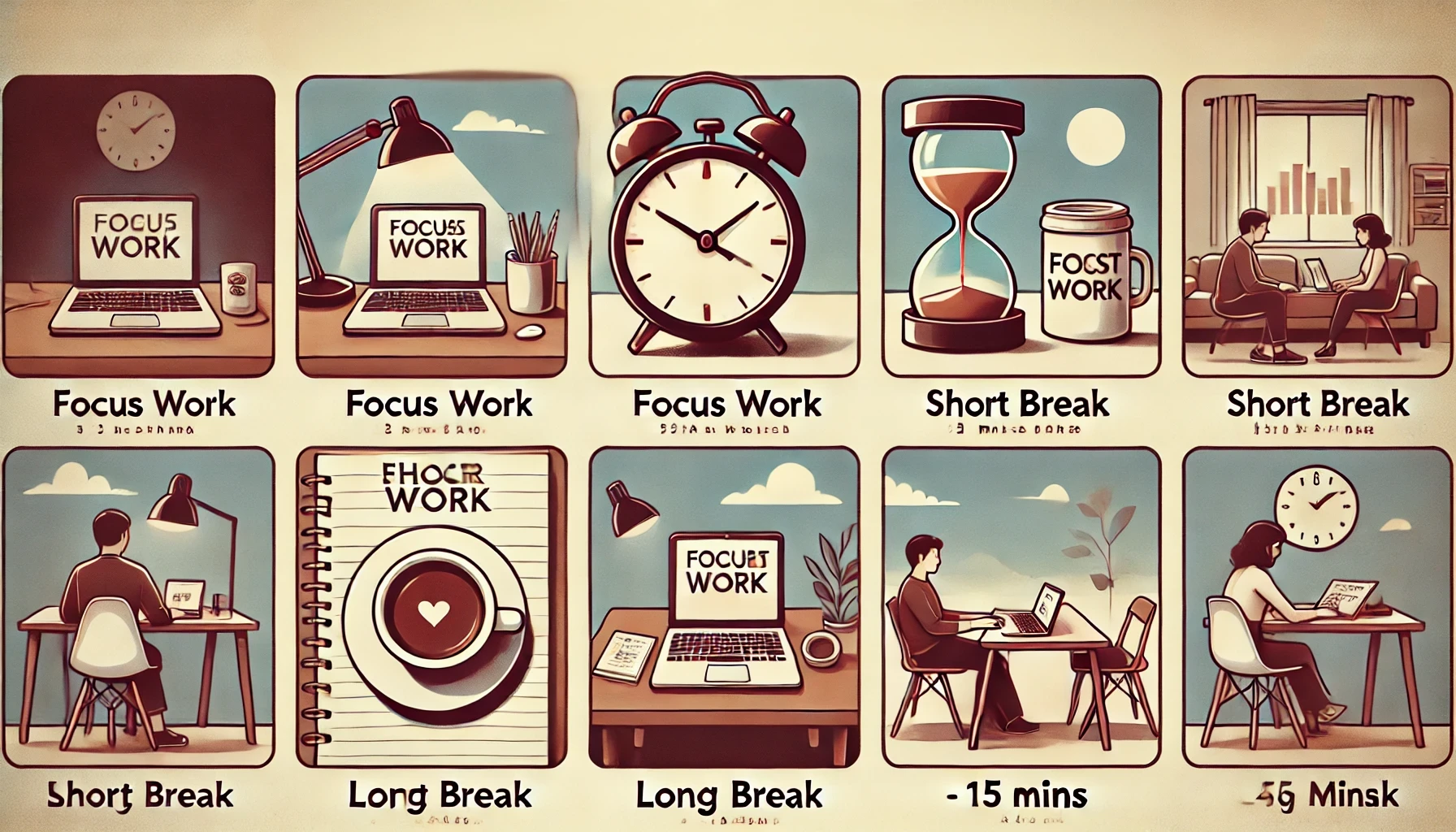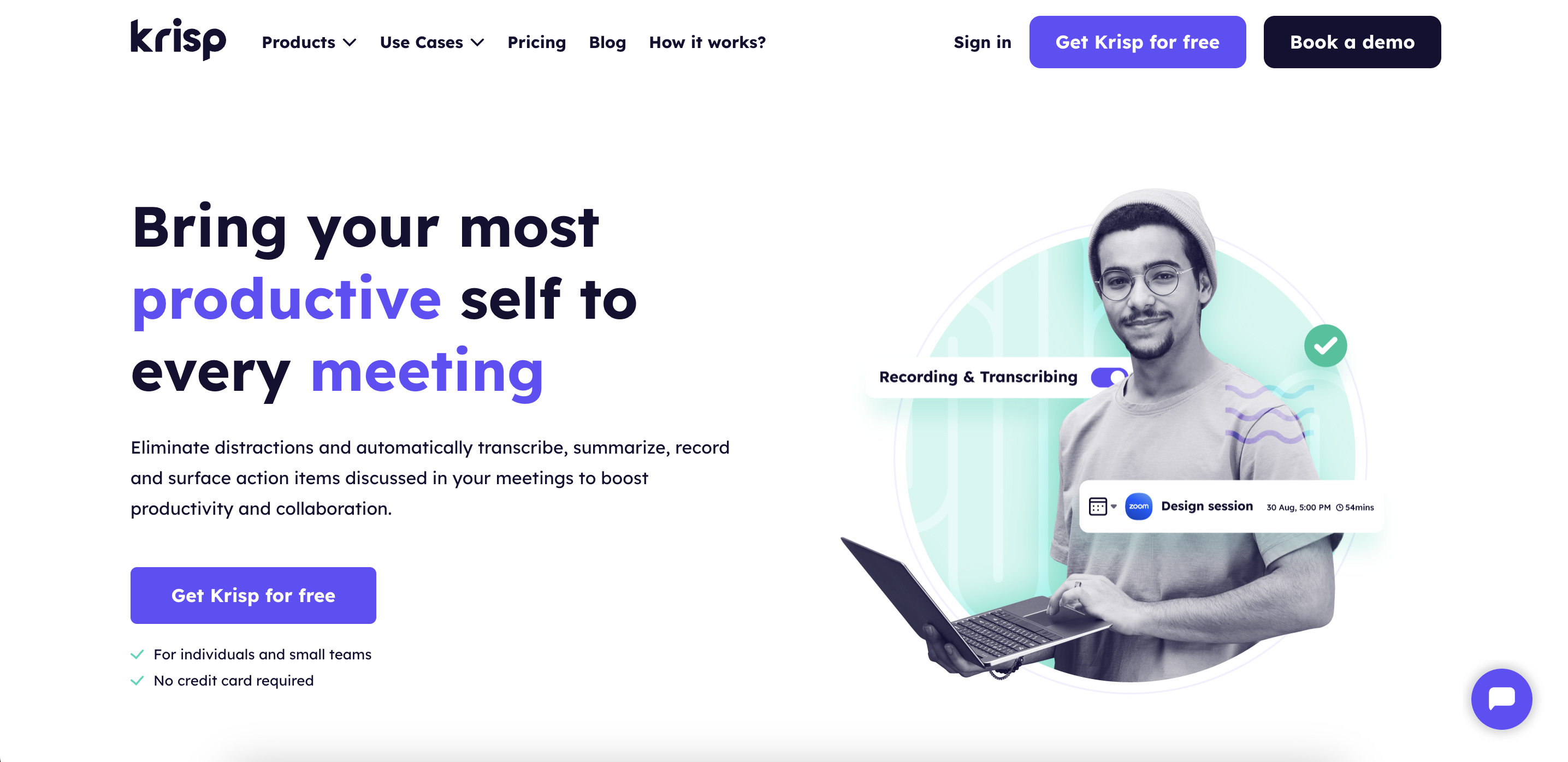Imagine a productivity tool that breaks your day into manageable chunks, allowing you to work smarter, not harder. The Pomodoro Technique does exactly that—transforming how people approach time management. By encouraging short bursts of focused work separated by refreshing breaks this method works. And, yes, it’s all inspired by a simple tomato (or pomodoro in Italian). What may sound quirky at first has become helpful for millions around the world who swear by its impact on their work-life balance.
The method is straightforward: work intensely for 25 minutes, then take a five-minute break. Each 25-minute interval is called a “pomodoro,” and after completing four pomodoros, you get a longer break. This structured approach helps minimize distractions, prevent burnout, and boost productivity by making time feel less overwhelming. By focusing on a single task within each interval, the Pomodoro Technique makes it easier to stay on track and make consistent progress, even through demanding workloads or open-ended projects.
So, why does the Pomodoro Technique work so well? It’s perfect for those who get easily sidetracked, overestimate their to-do lists, or struggle with sticking to tasks. The method brings accountability, prevents fatigue, and even adds a bit of gamified fun to your day. In this article, we’ll explore proven strategies to help you get the most out of the Pomodoro Technique.
What is the Pomodoro Technique?
The Pomodoro Technique is a simple way to manage time. With this method, you work in focused 25-minute sessions called “pomodoros,” followed by a short 5-minute break. Many people love this technique because it:
- Increases focus
- Reduces distractions
- Prevents burnout
- Builds accountability
- Boosts motivation
This approach is especially helpful for perfectionists and procrastinators. It’s much easier to commit to 25 minutes of focused work than to tackle a whole afternoon without a break!
History Behind the Pomodoro Technique

Pomodoro Technique was developed in the late 1980s by Francesco Cirillo, an Italian student who struggled with focus and productivity. Feeling overwhelmed by his studies and frequent distractions, Cirillo challenged himself to work in short, timed intervals to stay engaged. He started with a simple kitchen timer shaped like a tomato (pomodoro in Italian), which became the inspiration for the name of his technique.
Cirillo initially set the timer for 10 minutes and worked solely on one task until the timer rang. This experiment was surprisingly effective, so he increased the interval to 25 minutes, followed by a short break.
Over time, he refined the technique into the Pomodoro Technique we know today, with each “pomodoro” representing a 25-minute work session, followed by a five-minute break. After four pomodoros, a longer break is taken to reset and recharge.
The Pomodoro Technique has since become a popular method worldwide, especially for people who struggle with procrastination or distractions. It’s used by students, professionals, and anyone looking to improve focus and manage time better.
The idea behind it is simple yet powerful: breaking work into manageable, timed intervals helps reduce mental fatigue, improve concentration, and create a rewarding rhythm to tackle even the most challenging tasks.
Tips to Maximize Your Productivity with Pomodoro Technique
The Pomodoro Technique is straightforward, but a few strategic adjustments can help you get even more out of each session. With these tips, you’ll not only stay focused during each 25-minute interval but also create a balanced routine that supports long-term productivity. From planning ahead to customizing your session lengths, these suggestions are all about helping you work efficiently while avoiding burnout. Let’s explore some simple yet powerful ways to make every pomodoro count!
1. Plan Your Pomodoros Ahead of Time
Start your day by making a quick list of assignments you want to complete during each Pomodoro session. Breaking down your to-do list in advance helps you feel more in control and reduces the need to decide on the fly what to tackle next. Think of each Pomodoro session as a focused step toward your daily goals.
Having a plan also keeps you organized, making it easier to stick to the technique. When you know exactly what you’ll work on in each session, you’re less likely to get distracted or overwhelmed. No more wondering what’s next—just glance at your list and dive in. This pre-planning process doesn’t have to be lengthy. Spend a few minutes at the start of the day or right before starting a new project. Once you’re clear on what needs doing, your pomodoros will feel like quick, focused bursts of progress.
2. Optimize Your Pomodoros with Noise-Free Focus

Creating a distraction-free environment is essential for maximizing the effectiveness of each Pomodoro session, and noise control plays a big role. Background noise, whether from people chatting, street sounds, or household activity, can quickly break your focus and make it difficult to regain momentum. By minimizing these distractions, you give your brain the space to fully concentrate on the task at hand.
For many, using noise-canceling tools like Krisp allow them to maintain a quiet workspace no matter where they are. This intentional quiet sets the stage for deeper focus during every Pomodoro.
- Blocks Distractions in Real-Time: Krisp filters out background noise during calls or focus sessions, helping you maintain deep concentration without the disruption of surrounding sounds.
- Maintains a Consistent Focus Environment: Whether you’re in a busy coffee shop or a noisy home, Krisp creates a quiet workspace, so each pomodoro feels as focused as the last.
- Reduces Cognitive Fatigue: By eliminating the need to filter out background sounds, Krisp conserves mental energy, helping you stay sharp and productive through multiple pomodoros.
- Improves Call Clarity for Meeting Pomodoros: When using pomodoros for meetings, Krisp ensures everyone can hear you clearly and vice versa, allowing you to stay focused on the conversation without background interference.
- Enhances Work Quality: With fewer auditory interruptions, Krisp supports a smoother workflow, helping you produce higher-quality work in each uninterrupted, focused interval.
Noise-free focus doesn’t just improve productivity—it also contributes to overall well-being. Studies show that constant interruptions and background noise can lead to cognitive fatigue, meaning your mind tires out more quickly. When you can focus in silence, the brain can stay alert longer. By removing the need to filter out external sounds, you’re preserving mental energy, which is essential for maintaining productivity across multiple pomodoros in a day.
3. Add Extra Pomodoros for Unexpected Tasks
Life rarely goes as planned, and some tasks always end up taking longer than we think. To avoid feeling stressed or behind, try adding a few extra pomodoros into your schedule each day. These “overflow” pomodoros give you breathing room for anything unexpected that comes up.
Think of these extras as buffer time. If you finish your planned work on time, you can use any leftover pomodoros for catching up. With some wiggle room built into your day, you’ll feel less pressured and more adaptable.
Adding overflow pomodoros is a great way to work without rushing. And if you don’t end up needing them, it’s like having free time to celebrate all you’ve accomplished. Either way, it’s a win-win!
4. Adjust the Pomodoro Length to Fit Your Needs
While the classic pomodoro session is 25 minutes, that’s not a hard-and-fast rule. If you find that 25 minutes is too short to really get into a flow or too long to stay focused, feel free to experiment. You might find that 20 or even 40 minutes works better for you.
Adjusting your pomodoro length can help you stay energized and motivated. Some tasks are quick and may only need a short burst, while others require more focus time.
The goal is to keep the technique effective and enjoyable for you—whatever duration keeps you moving forward without wearing you out.
So, don’t be afraid to try out different pomodoro lengths until you find your sweet spot. This flexibility is key to making the technique work for your unique style and needs.
5. Take Screen-Free Breaks
When it’s break time, give your eyes a rest by stepping away from screens. Instead of scrolling or checking emails, try stretching, taking a walk, or doing something else that feels refreshing. These screen-free breaks help you recharge so you’re ready to focus again.
Screen-free breaks are also great for breaking the cycle of digital fatigue. Giving your brain a short breather helps improve focus and prevents burnout. Plus, moving around a bit can boost your energy and improve your mood, making the next pomodoro easier to tackle.
Find a few go-to activities you enjoy for breaks, like listening to a song, getting a quick snack, or even just staring out the window for a minute. Small breaks like these make a big difference in keeping you fresh and focused.
6. Use a Timer to Stick to Your Schedule
Humans are fallible. No matter how motivated you are at the start of the day, it’s really hard to stick to your pomodoros. Hold yourself accountable with a break reminder app.
A pomodoro timer can be a real lifesaver when it comes to sticking with the technique. Having a timer reminds you when to work and when to rest, keeping you accountable and making sure you don’t burn out. It’s like having a little productivity buddy that helps you stay on track.
Timers also make it easier to maintain a balanced work rhythm. With a clear start and stop time, you’re more likely to stay focused during work sessions and actually take breaks instead of pushing through. It creates a structure that’s both productive and sustainable.
You can use any timer that works for you. The key is to set up a system that keeps you motivated and helps you enjoy the rhythm of work and rest.
The Secret Sauce Behind the Pomodoro Technique
The Pomodoro Technique really does work—and the quirkiness of using a “tomato” timer to break down work makes it surprisingly effective! What makes it so powerful is the consistency it builds.
Instead of waiting for motivation to magically appear, the Pomodoro Technique helps you develop a steady work rhythm that becomes part of your routine. With each pomodoro, you’re not just chipping away at tasks but also training yourself to stay focused, which becomes a long-lasting habit.
Once you get the hang of it, you’ll find that the Pomodoro Technique takes away a lot of the stress around managing time. Rather than feeling overwhelmed by a long to-do list, you start focusing on what’s right in front of you, one pomodoro at a time.
This shift in mindset helps you get things done without the pressure of having to tackle everything all at once. Plus, it’s a great way to avoid cognitive biases around time—like thinking you need hours of uninterrupted focus to make progress.
Best of all, this technique naturally builds a healthier work-life balance. By alternating between work and rest, you’re actually giving your brain a chance to recharge. This structured approach encourages you to take breaks regularly, which isn’t just better for productivity but also for your well-being. The Pomodoro Technique is simple, but it brings out the best in both work and rest.
FAQ


